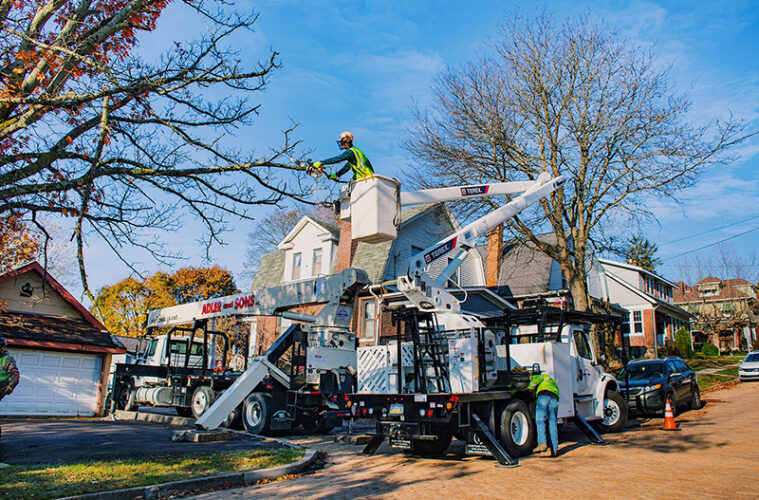When the sun rises while casts golden light upon the leaves of ancient oaks alongside towering pines, a qualified arborist begins his or her day-to-day journey in the world of trees. For these dedicated experts, each day brings new challenges as well as findings, ranging from assessing tree health to overseeing urban landscapes. The work of an arborist extends well beyond mere cosmetic appeal; it is a blend of scientific knowledge, artistic talent, plus care for the environment which plays an essential role for maintaining the health and safety for our green friends.
During this exploration of tree care chronicles, we'll delve deep the the daily adventures in the arborist. Readers will discover why hiring a certified professional matters, the complex art of tree pruning, and the tools allow them for protect our trees. Whether it's identifying tree diseases or conducting safe removals, these arborists are the unsung heroes of the mission for healthy, vibrant trees in our neighborhoods. Come along to we uncover valuable insights from these professionals who dedicate their careers for the purpose of caring and preservation efforts of our urban forests.
A Significance of Employing a Qualified Arborist

Engaging a certified arborist is crucial for preserving the health and security of trees in both residential and residential and commercial landscapes. Certified arborists possess comprehensive expertise and skills in arboreal maintenance, enabling them to assess tree health effectively and recognize issues that may go unnoticed by the untrained eye. Their expertise ensures that trees are cared for using best practices in the industry, which can considerably enhance their duration and aesthetic appeal.
In addition to supporting tree health, qualified arborists play a crucial role in hazard administration. Trees can pose risks when they are sick, hurt, or improperly managed. A licensed arborist is trained to spot potential risks and recommend appropriate actions, whether it be shaping, supporting, or in some instances, disposal. Their capability to perform thorough tree assessments helps to prevent property damage, personal injury, and even environmental issues caused by problematic trees.
Moreover, hiring a certified arborist supports responsible tree maintenance techniques. These professionals are dedicated to teaching their clients about correct tree care techniques, which can lead to a better understanding of the environment and the significance of trees in metropolitan settings. By collaborating with a licensed arborist, individuals and companies can guarantee that their trees assist to the ecosystem while also enhancing property value and street appeal.
Tree Maintenance Strategies and Tips
Arborists possess a abundance of knowledge about the most effective strategies for ensuring tree vitality and protection. One essential technique is correct pruning, which helps manage the expansion of a tree while enhancing its general wellness. Arborists understand the different types of pruning—such as thinning, shortening, and crown reduction—and know the methods and the timing to use each approach. The art behind tree pruning is vital, as incorrect methods can lead to injury or disease, undermining the tree’s integrity.
Another crucial aspect of an arborist's work is diagnosing tree diseases. OK Treecare are skilled to detect symptoms of various tree illnesses and pests, allowing for prompt intervention. By assessing leaf color changes, bark qualities, and overall health, arborists can pinpoint specific problems and formulate treatment plans. Utilizing methods like soil sampling and tree biopsies, they provide comprehensive diagnoses that increase a tree's durability and longevity.
In cities, arborists play a crucial role in tree conservation and care. They utilize techniques such as tree cabling and stabilization to assist trees that may be at risk of collapsing or experiencing structural issues. Additionally, they encourage sustainable practices, ensuring that trees contribute beneficially to urban ecosystems. This assistance helps lessen hazards while beautifying urban areas, making the role of an arborist not only significant but necessary for flourishing communities.
Safety and Risk Management in Tree Care
Security is crucial in the industry of arboriculture, as tree care often involves operating at elevations and handling large, heavy machinery. Certified arborists undergo comprehensive education to understand the dangers associated with climbing, pruning, and dismantling trees. They use PPE, including hard hats, gloves, and harnesses, to reduce the potential for injury. Vigilance of the environment, proper communication with co-workers, and adherence to safety protocols significantly reduce the likelihood of accidents on the job.
Hazard assessment is an integral aspect of an arborist's duties. Before starting any tree care task, a detailed risk evaluation is performed to detect potential hazards, such as dead branches, unstable trees, or power cables in the vicinity. Arborists examine these risks and implement strategies to reduce them, which may include supporting and reinforcing weakened structures or advising clients on the safest time to perform specific activities. This preventive approach not only safeguards the arborists but also ensures the protection of real estate and individuals nearby.
Furthermore, the arborist's role broadens to informing clients about the risks of DIY tree work. Many homeowners misjudge the dangers involved in tree care and may not be aware of hazardous conditions that require professional intervention. Arborists provide valuable advice on how to maintain tree health safely and emphasize the importance of employing trained professionals to avoid accidents and ensure the durability of their trees. By focusing on safety and hazard control, arborists protect themselves, their clients, and the urban environment they support.
